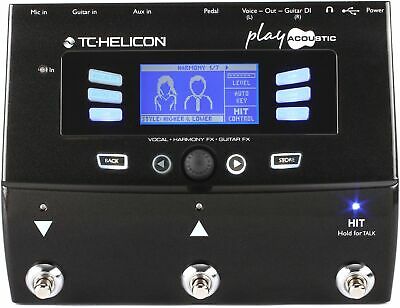-40%
AKAI ME10D Midi Digital Delay rack mount unit
$ 45.4
- Description
- Size Guide
Description
AKAI ME10D Midi Digital Delay unit for sale.Unit has been put through its paces and it functions 100%. Please see the photos for cosmetic condition.
Unit will be well wrapped especially to protect the rack ears and controls, and sent Priority Mail USPS with tracking.
Any questions I will get back to you asap.
User manuals are available for free online.
From Sound On Sound magazine:
ME10D MIDI Digital Delay
Firstly, it must be pointed out that this unit doesn't act upon audio signals so you shouldn't expect it to offer exactly the same facilities as regular digital delays. The MIDI Digital Delay does just that - it delays MIDI information or, more accurately, it allows you to create a delay effect on note information received from a keyboard or sequencer and this delay is continuously variable up to a maximum of one second.
APPLICATION
A typical set-up to include the use of the ME10D would be to have a keyboard MIDI Out plugged into the MIDI In on the ME10D; then take the MIDI Out and plug it into another synth, expander or sampler. Once the system is connected up, a simple demonstration of what may be achieved would be to first select a different voice on the master keyboard (sending MIDI data) and slaved synth (receiving MIDI data).
By repeatedly striking a note on the keyboard and slowly increasing the delay time on the ME10D, you'll hear the two sounds generated by the synths begin to move apart in time until there's a distinct repeat of the pitch but with a different sound being heard. This is particularly impressive if you patch the keyboard sound output hard left and hard right over your speakers.
If you had selected the same sound on both synthesizers you could produce double tracking effects to give, for example, a synth bass line a fuller sound, though over-adventurous use of the delay time could cause strange tempo effects.
DIRECTIONS
The two MIDI signal routing switches found on the front panel enable three possible output combinations: DELAY, which will route the input through the processor and output the resulting delayed signal; THRU which routes the signal uneffected straight to the output; and by selecting both DELAY and THRU the original input will be heard mixed together with the delayed signal at the output. When this last option is chosen you're tripling up the voices instead of doubling, so you can get some really beefy sounds out of your synthesizers, especially with the help of a further three switches labelled octave 'down', 'normal' and 'up'.
The result of selecting one of these will give you the facility to move the pitch of the repeat sound up or down an octave relative to the original MIDI pitch data. You could, for example, select the same sound on both synths, introduce a slight delay between the two with the delay control and also select octave down. This would result in an octave lower bass that fills out the sound and follows your playing, whether it be chords or single notes, but I'm afraid that pitch-bend fans won't feel the benefits of octave following as the ME10D doesn't transmit pitch-bend info to the MIDI Out.
The choice of two different voice sounds can be far more interesting as you can mix the textures of both sounds and create some marvellous results by adjusting the Dynamics control. This simply varies the original velocity of the note by allowing you to dampen the dynamics and produce some nice warming effects, particularly on lower octave string sounds.
One final point about the Dynamics control is that the Akai handbook's description of its use is wrong and talks instead about a Balance control to vary the original and delayed sound. This control doesn't exist.
You may be forgiven for thinking that compared to most audio digital delays the Akai ME10D doesn't offer much in the way of parameter controls. What you must remember is that we are dealing with the delaying of MIDI data here and so facilities such as feedback are not possible because you can't mix two MIDI data streams together. This means that the ME10D doesn't produce multiple repeat echo effects so you shouldn't think of it as a normal echo unit. It is more closely related to a harmoniser if comparisons must be drawn.
As we're dealing with MIDI information it's not surprising to find that Akai's designers have taken the opportunity to include an option on the MIDI Program Change parameter. This selects whether or not MIDI program change data is sent to the MIDI Out socket and is particularly useful when you want to change the sound (via the program number) on the master keyboard from, say, strings to brass but you don't want the slave synth sound to change. A thoughtful option that one.
To conclude, the ME10D MIDI Digital Delay is certainly a useful device which offers some interesting features that straightforward audio delays can't give you - full marks for originality.

















